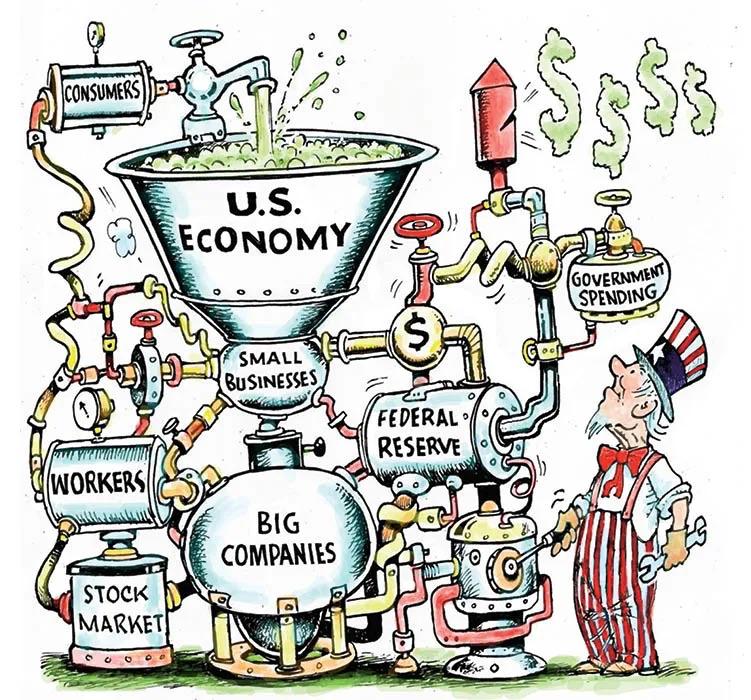The Dynamics of Economic Growth: Key Drivers, Challenges, and Future Trends

Introduction
Economic growth is one of the most significant indicators of a nation’s prosperity and development. It reflects the increase in the production of goods and services over time, leading to improved living standards, job creation, and technological advancement. However, economic growth is influenced by multiple factors, including government policies, global trade, technological innovation, labor markets, and geopolitical stability. In this article, we will explore the key drivers of economic growth, the challenges that hinder progress, and the future trends shaping the global economy.
Key Drivers of Economic Growth
Economic growth is driven by a combination of factors that enhance productivity, efficiency, and overall economic output. The primary drivers include:
-
Capital Investment
- Investment in infrastructure, machinery, and technology improves production capabilities and efficiency.
- Public and private sector investments in roads, bridges, telecommunications, and energy support long-term economic expansion.
-
Technological Innovation
- Advances in technology increase productivity by automating processes, improving efficiency, and reducing costs.
- Artificial intelligence (AI), blockchain, and the Internet of Things (IoT) are transforming industries, driving innovation, and boosting economic growth.
-
Labor Force and Human Capital Development
- A skilled and educated workforce contributes to higher productivity and economic output.
- Higher education and vocational training programs ensure workers can adapt to new industries and technological changes.
-
Government Policies and Economic Regulation
- Fiscal policies, such as tax incentives and government spending, can stimulate growth by encouraging investment and consumption.
- Monetary policies, including interest rate adjustments and inflation control, help maintain economic stability.
-
Global Trade and Market Expansion
- International trade fosters economic growth by expanding markets, increasing competition, and encouraging specialization.
- Free trade agreements and global supply chains enhance economic interdependence and efficiency.
-
Entrepreneurship and Business Development
- Startups and small businesses drive innovation and job creation, contributing significantly to economic expansion.
- Supportive regulatory environments and access to financing foster entrepreneurship.
Challenges to Economic Growth
Despite the drivers of growth, numerous challenges can hinder economic progress and stability. These challenges include:
-
Economic Inequality
- Disparities in income distribution and access to resources can limit economic opportunities for certain populations.
- Unequal economic growth can lead to social unrest and reduced consumer spending.
-
Inflation and Price Instability
- High inflation erodes purchasing power, reduces investment confidence, and destabilizes financial markets.
- Governments must balance economic stimulus with inflation control to maintain sustainable growth.
-
Geopolitical Uncertainty and Trade Disruptions
- Wars, trade wars, and diplomatic conflicts can disrupt global supply chains and economic cooperation.
- Sanctions, tariffs, and protectionist policies can reduce trade efficiency and economic growth.
-
Environmental and Climate Challenges
- Climate change poses risks to agricultural production, infrastructure, and resource availability.
- Sustainable economic policies and investments in green technology are necessary to mitigate environmental damage.
-
Technological Disruptions and Job Displacement
- Automation and AI may lead to job losses in traditional industries, requiring workforce reskilling and adaptation.
- Economic policies must address the transition of workers into emerging industries.
Future Trends in Economic Growth
Looking ahead, several emerging trends will shape the trajectory of economic growth worldwide:
-
Digital Economy and Technological Transformation
- The rise of e-commerce, digital banking, and fintech is reshaping economic structures and consumer behavior.
- Investment in cybersecurity and data protection will be essential for maintaining trust in digital transactions.
-
Green Economy and Sustainability
- The shift towards renewable energy sources and sustainable business practices will define future economic growth models.
- Governments and businesses are investing in green technologies, such as electric vehicles and carbon capture solutions.
-
Demographic Shifts and Workforce Evolution
- Aging populations in developed countries may lead to labor shortages, requiring immigration and automation solutions.
- Developing nations with young populations will experience economic expansion as they build industrial and service sectors.
-
Reshoring and Supply Chain Resilience
- Companies are reconsidering offshore manufacturing and investing in domestic production to avoid global supply chain disruptions.
- Decentralized supply chains and regional trade agreements will influence economic growth strategies.
-
Financial Innovation and Decentralized Finance (DeFi)
- Cryptocurrencies, blockchain technology, and decentralized finance (DeFi) platforms are redefining banking and financial transactions.
- Governments and regulatory bodies will need to adapt policies to accommodate the rise of digital assets.
Conclusion
Economic growth remains a complex and dynamic process influenced by various internal and external factors. While investment, technology, and trade play crucial roles in driving progress, challenges such as inflation, inequality, and environmental concerns must be addressed to ensure sustainable development. As the global economy evolves, adapting to emerging trends, fostering innovation, and implementing effective policies will be essential for maintaining long-term economic prosperity. By understanding and leveraging these dynamics, businesses, governments, and individuals can navigate the challenges and opportunities that define the future of economic growth.